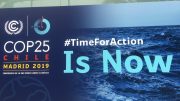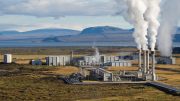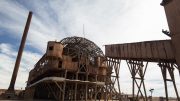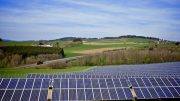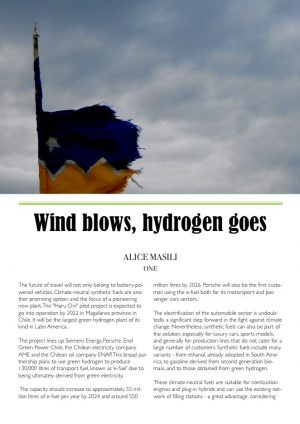 The future of travel will not only belong to battery-powered vehicles. Climate-neutral synthetic fuels are another promising option, and the focus of a pioneering new plant. The “Haru Oni” pilot project is expected to go into operation by 2022 in Magallanes province in Chile. It will be the largest green hydrogen plant of its kind in Latin America.
The future of travel will not only belong to battery-powered vehicles. Climate-neutral synthetic fuels are another promising option, and the focus of a pioneering new plant. The “Haru Oni” pilot project is expected to go into operation by 2022 in Magallanes province in Chile. It will be the largest green hydrogen plant of its kind in Latin America.
The project lines up Siemens Energy, Porsche, Enel Green Power Chile, the Chilean electricity company AME and the Chilean oil company ENAP. This broad partnership plans to use green hydrogen to produce 130,000 litres of transport fuel, known as ‘e-fuel’ due to being ultimately derived from green electricity.
The capacity should increase to approximately 55 million litres of e-fuel per year by 2024 and around 550 million litres by 2026. Porsche will also be the first customer, using the e-fuel both for its motorsport and passenger cars sectors.
The electrification of the automobile sector is undoubtedly a significant step forward in the fight against climate change. Nevertheless, synthetic fuels can also be part of the solution, especially for luxury cars, sports models, and generally for production lines that do not cater for a large number of customers. Synthetic fuels include many variants – from ethanol, already adopted in South America, to gasoline derived from second generation biomass, and to those obtained from green hydrogen.
These climate-neutral fuels are suitable for combustion engines and plug-in hybrids and can use the existing network of filling stations – a great advantage, considering the massive investments required to complete the transition towards a fully electric system. The interests of carmakers, keen to keep alive the production of combustion engines, gearboxes and mechanical drives, are shared with oil and petrochemical companies looking for a solution that keeps them in play in a decarbonised world.
These are the reasons that prompted the sports car maker Porsche to take part in the development and construction of the Haru Oni plant.
The wide availability of energy from renewable sources was indispensable for the project. The excellent and abundant wind conditions in southern Chile provide just what is needed to ensure the production of a climate-neutral fuel. Siemens Energy’s proton-exchange membrane electrolysers will convert the energy supplied by wind turbines into hydrogen. Subsequently, the CO2 filtered from the air will be combined with hydrogen to form synthetic methanol (“renewable methanol”). Finally, the methanol will be converted to gasoline, using MTG (methanol-to-gasoline) technology provided by Exxon Mobil.
The Haru Oni project, also known as HIF, Highly Innovative Fuels, received 8 million euros from the German Ministry of Economic Affairs and Energy, as part of the national hydrogen strategy. “We know we won’t be able to cover our national demand out of domestic production alone and will need international partnerships. So I’m very pleased to see that Siemens Energy and Porsche are developing production capacity in other countries, along with importing structures, for green hydrogen and its daughter products. Thanks to German know-how, for the first time in the world innovation from the laboratory, will now be applied in an integrated, commercial plant”, Germany Economy Minister Peter Altmaier said.
The transport and industry sectors are together responsible for 45% of the world’s CO2 emissions. The decarbonisation of transport and industry is much more complicated than in the energy sector, as it brings into play more actors and more diverse situations.
In Europe, cars are responsible for around 12% of the region’s CO2 emissions. This is why the European Union has introduced CO2 emission performance standards for new passenger cars and new vans for 2025 and 2030, and also decided to gradually incorporate road traffic and the construction sector into its emissions trading scheme. Encouraging eco-innovation of all kinds is the priority.
Alice Masili


